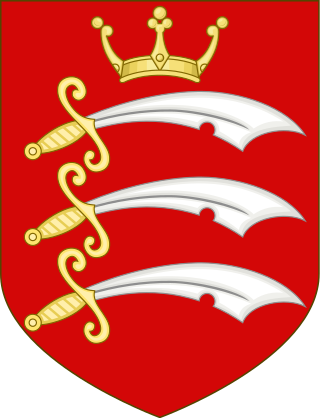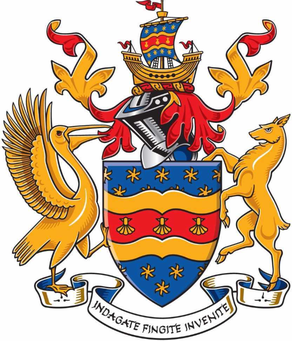Related Research Articles

The Technical University of Catalonia, currently referred to as BarcelonaTech, is the largest polytechnic university in Catalonia, Spain.
The University of Brighton is a public university based on four campuses in Brighton and Eastbourne on the south coast of England. Its roots can be traced back to 1858 when the Brighton School of Art was opened in the Royal Pavilion. It achieved university status in 1992.

Anglia Ruskin University (ARU) is a public university in East Anglia, United Kingdom. Its origins are in the Cambridge School of Art (CSA), founded by William John Beamont, a Fellow of Trinity College at University of Cambridge, in 1858. It became a university in 1992, and was renamed after John Ruskin, the Oxford University professor and author, in 2005. Ruskin gave the inauguration speech of the Cambridge School of Art in 1858. It is one of the "post-1992 universities". The motto of the university is in Latin Excellentia per societatem, in English Excellence through partnership.

Middlesex University London is a public research university based in Hendon, northwest London, England. The university also has campuses in Dubai and Mauritius. The name of the university is derived from its location within the historic county boundaries of Middlesex.

The University of the West of England is a public research university, located in and around Bristol, England, UK. With more than 39,912 students and 4,300 staff, it is the largest provider of higher education in the South West of England.

Birmingham City University is a university in Birmingham, England. Initially established as the Birmingham College of Art with roots dating back to 1843, it was designated as a polytechnic in 1971 and gained university status in 1992.

London South Bank University (LSBU) is a public university in Elephant and Castle, London. It is based in the London Borough of Southwark, near the South Bank of the River Thames, from which it takes its name. Founded in 1892 as the Borough Polytechnic Institute, it achieved university status in 1992 under the Further and Higher Education Act 1992.

The University of Plymouth is a public research university based predominantly in Plymouth, England, where the main campus is located, but the university has campuses and affiliated colleges across South West England. With 18,410 students, it is the 57th largest in the United Kingdom by total number of students.

The University of Roehampton, London, formerly Roehampton Institute of Higher Education, is a public university in the United Kingdom, situated on three major sites in Roehampton, in the London Borough of Wandsworth. The University traces its roots to four institutions founded in the 19th century, which today make up the university's constituent colleges, around which student accommodation is centred: Digby Stuart College, Froebel College, Southlands College and Whitelands College.

Oxford Brookes University is a public university in Oxford, England. It is a new university, having received university status through the Further and Higher Education Act 1992. The university was named after its first principal, John Henry Brookes, who played a major role in the development of the institution.

California State Polytechnic University Pomona, is a public polytechnic university in Pomona, California. It is the largest of the three polytechnic universities in the California State University system.

The University of Hertfordshire (UH) is a public university in Hertfordshire, United Kingdom. The university is based largely in Hatfield, Hertfordshire. Its antecedent institution, Hatfield Technical College, was founded in 1948 and was identified as one of 25 Colleges of Technology in the United Kingdom in 1959. In 1992, Hatfield Polytechnic was granted university status by the British government and subsequently renamed University of Hertfordshire. It is one of the post-1992 universities.

University of East London (UEL) is a public university located in the London Borough of Newham, London, England, based at three campuses in Stratford and Docklands, following the opening of University Square Stratford in September 2013. The University of East London began as the West Ham Technical Institute and it was officially opened in October 1898 after approval was given for the construction of the site by the West Ham Technical Instruction Act Committee in 1892 following the Technical Instruction Act of 1889. It gained university status in 1992. It was formerly known as College of East London.

The University of Portsmouth (UoP) is a public university in Portsmouth, England. Comprising five faculties, the university offers a wide range of academic disciplines. With around 28,280 students enrolled in undergraduate and postgraduate programs, the university in 2022 was the 25th-largest higher education institution by student enrolments in the United Kingdom. The university employed approximately 3,500 staff in 2020.

Staffordshire University is a public research university in Staffordshire, England. It has one main campus based in the city of Stoke-on-Trent and four other campuses; in Stafford, Lichfield, Shrewsbury and London.
An institute of technology is an institution of tertiary education that specializes in engineering, technology, applied science, and natural sciences.

The University of Malawi (UNIMA) is a public university established in 1965 and until 4 May 2021, when the university underwent a delinking, was composed of four constituent colleges located in Zomba, Blantyre, and Lilongwe. Of the four colleges, the largest is Chancellor College in Zomba. It is part of the Malawian government educational system. The last Vice-Chancellor was Professor John Kalenga Saka.

The University of South Africa (UNISA) is the largest university system in South Africa by enrollment. It attracts a third of all higher education students in South Africa. Through various colleges and affiliates, UNISA has over 400,000 students, including international students from 130 countries worldwide, making it one of the world's mega universities and the only such university in Africa.
Scholars at Risk (SAR) is a United States-based international network of academic institutions organized to support and defend the principles of academic freedom and to defend the human rights of scholars around the world. Network membership includes over 530 higher educational institutions in 42 countries.
The QS World University Rankings is a portfolio of comparative college and university rankings compiled by Quacquarelli Symonds, a higher education analytics firm. Its first and earliest edition was published in collaboration with Times Higher Education (THE) magazine as Times Higher Education–QS World University Rankings, inaugurated in 2004 to provide an independent source of comparative data about university performance. In 2009, the two organizations parted ways to produce independent university rankings, the QS World University Rankings and THE World University Rankings.
References
- ↑ Lee, A., Stone, M., and Rodway-Dyer, S. 2009. The UPC Story - The Continuing Development of University of Plymouth Colleges. Plymouth: UPlaCe, UPC. Available Online at: hdl : 10293/55 (visited 12/06/09)
- ↑ "Higher Education Learning Partnerships - University of Plymouth Colleges". 19 August 2013. Archived from the original on 19 August 2013. Retrieved 26 June 2023.
- ↑ "Structure/organisation". 28 September 2011. Archived from the original on 28 September 2011. Retrieved 26 June 2023.
- ↑ "Wayback Machine" (PDF). Archived from the original (PDF) on 24 February 2012. Retrieved 26 June 2023.
- ↑ "Welcome to the University of Plymouth Colleges Faculty". 3 September 2011. Archived from the original on 3 September 2011. Retrieved 26 June 2023.
- ↑ "Our global partnerships with academic institutions". University of Plymouth. Retrieved 26 June 2023.
- ↑ "Academic Partnerships and University Strategy". University of Plymouth. Retrieved 26 June 2023.
